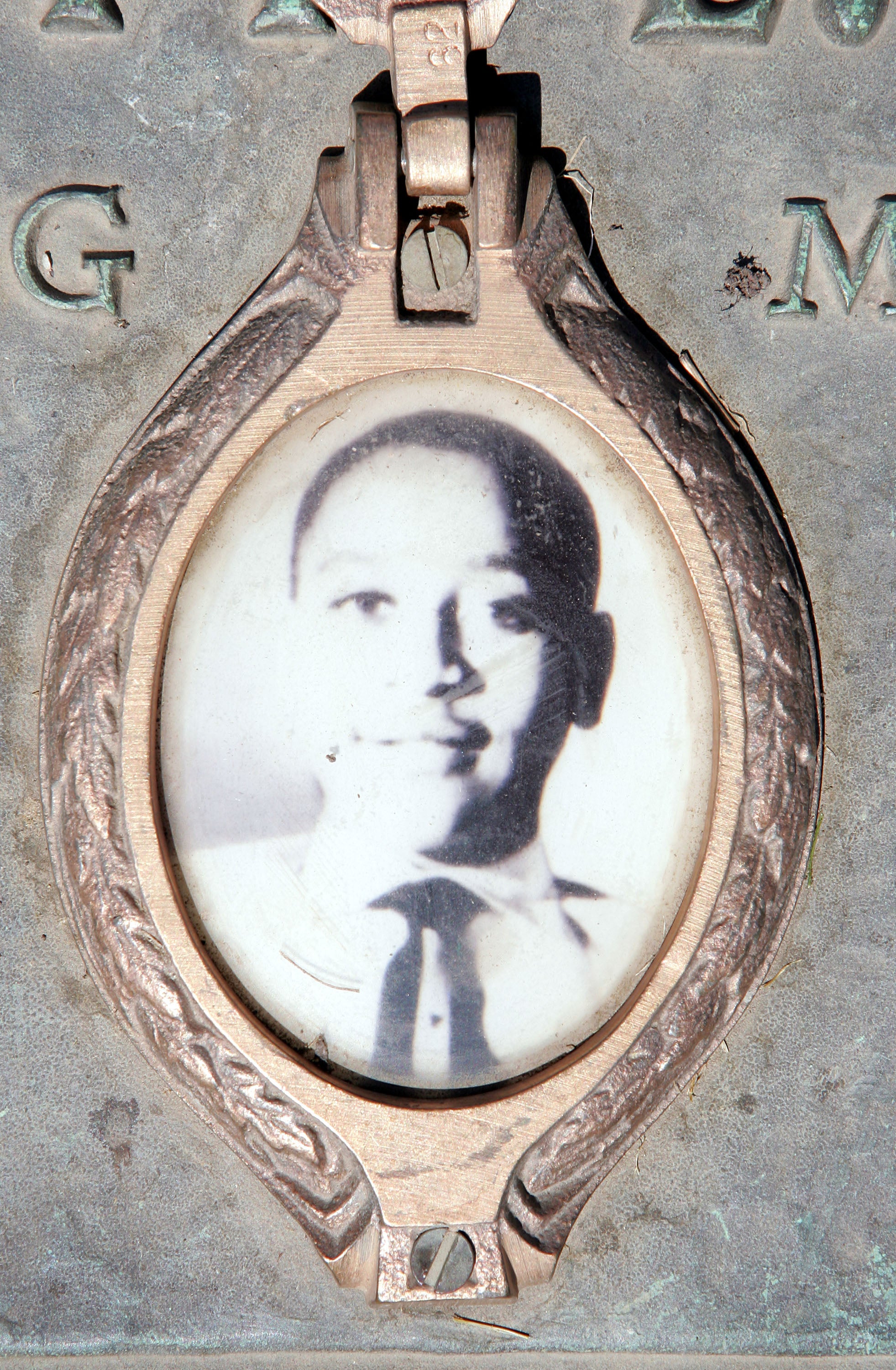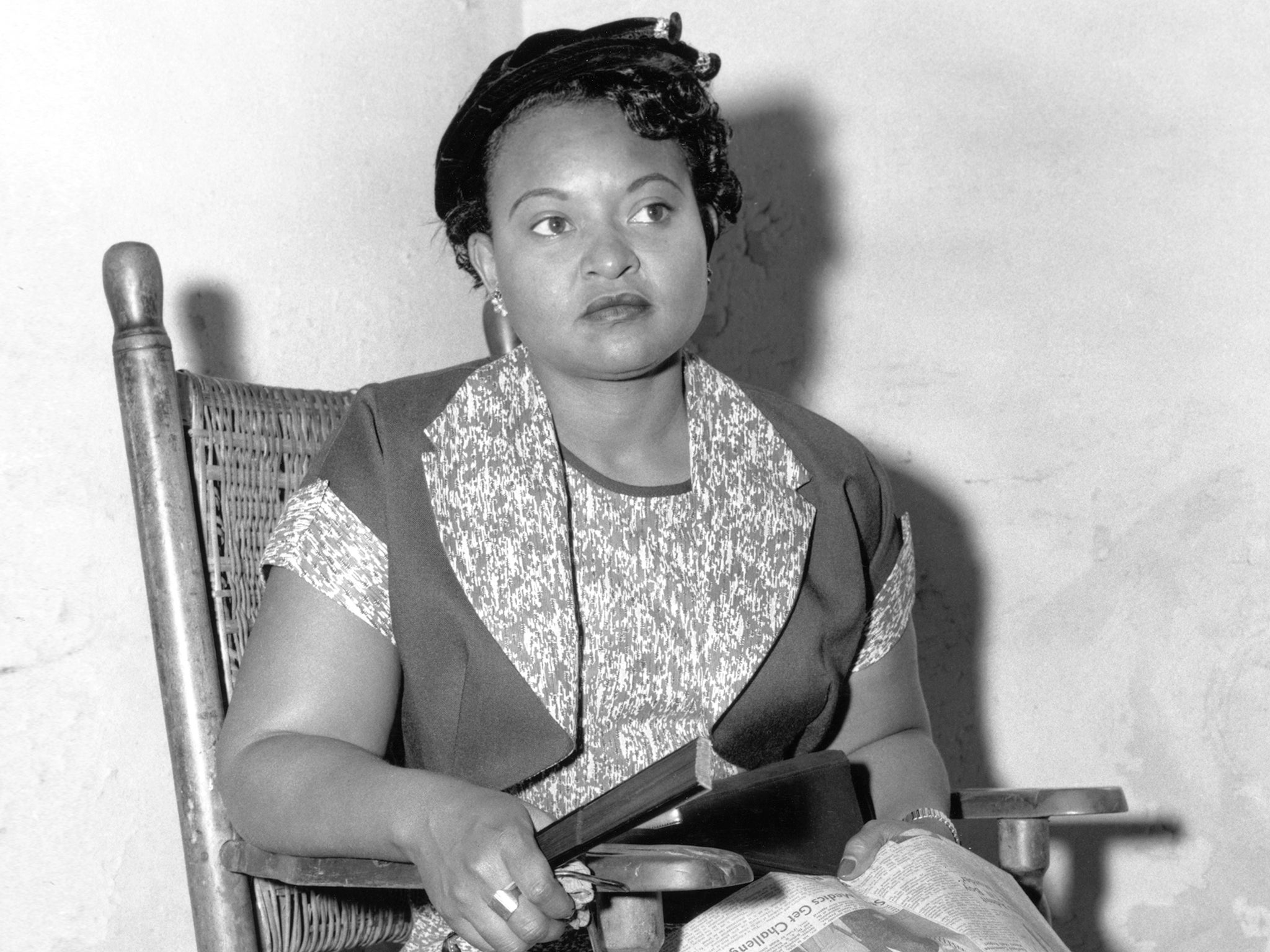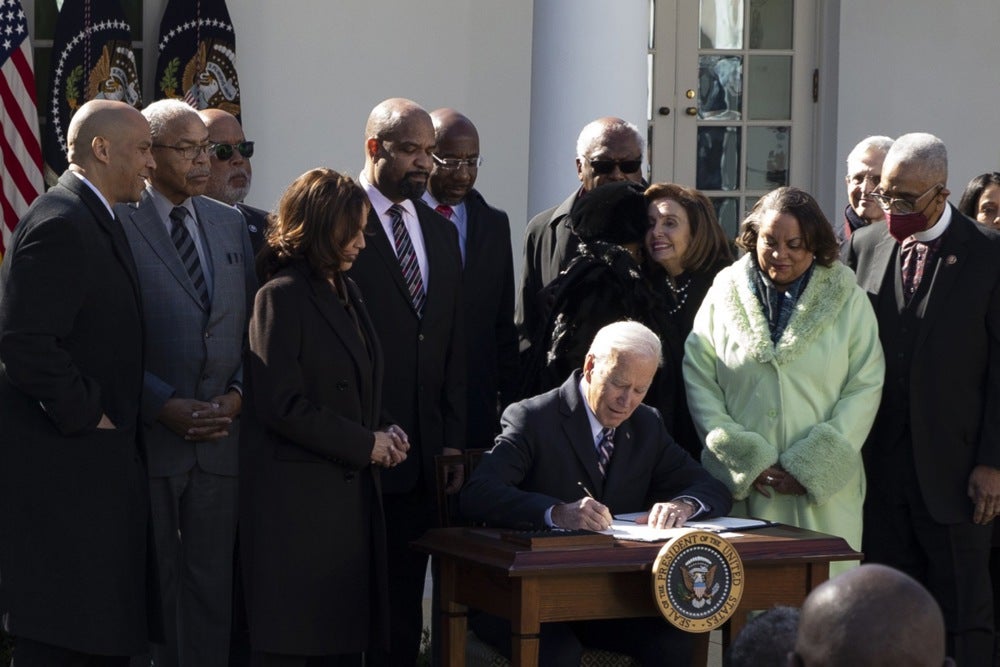How Emmett Till’s mother fought for justice after her son’s killing
A national momument spanning three sites central to the story of Till’s death will join efforts to reckon with America’s history of racist violence, Alex Woodward reports


Twenty days after Emmett Till’s body was pulled from the Tallahatchie River, Mamie Till-Mobley sat before a crowded courtroom in Sumner, Mississippi to testify in the trial of the two white men who were accused of killing him.
Her 14-year-old son was tortured, lynched and tied to a cotton gin fan and bound in barbed wire before he was thrown into the river in August 1955.
She identified the body and the ring he was wearing as her son’s, anticipating an argument from the defence that sought to cast doubt on the identity of the body, and hoping that the all-white jury would listen to the testimony of a grieving Black mother. Days earlier, before Till’s funeral in Chicago, she ordered that the casket remain open to “let the world see what they did to my boy”.
On 23 September, the jury acquitted Roy Bryant and JW Milam for Till’s murder and kidnapping. Months later, the men confessed to the crimes in an interview with Look magazine. Carolyn Bryant Donhom, whose accusations against Till led to his killing, died earlier this year.
No one was ever convicted for the Black teenager’s killing, which magnified Jim Crow-era violence that galvanised the Civil Rights movement, but his mother spent decades fighting injustice until she died in 2003.
On 25 July 2023, on what would be Till’s 82nd birthday, President Joe Biden will sign a proclamation dedicating a national monument to honor both Till and his mother.
“Our community has shown what reckoning and remembrance can look like,” according to a statement from the Emmett Till Interpretive Center. “This national monument designation affirms and shares this work on a national level. Racial reconciliation begins by telling the truth.”
‘The whole nation had to bear witness to this’
On 20 August 1955, Till-Mobley sent her teenage son on a southbound train from Chicago for a two-week stay in the small town of Money, Mississippi, where he would stay with relatives and spend late summer days with his cousins.
“I told him when he was coming down here that he would have to adapt himself to a new way of life,” she said during the trial. “And I told him to be very careful about how he spoke and to whom he spoke, and to always remember to say ‘Yes, sir’ and ‘No, ma’am’ at all times.”
Four days later, Till was milling around Bryant’s Grocery & Meat Market after his relatives and friends left the store. It was then that Carolyn Bryant Donhom would later claim Till had grabbed her by the waist and then whistled at her as she walked to her car.
Days later, at 2.20am, Roy Bryant and Milam pulled up to the home of Till’s great uncle Moses Wright. Milam was armed. They searched the home for Till, made him dress, and put him in their truck. Wright later recalled hearing a woman’s voice tell the men that they found the right boy. That was the last time Till’s family saw him alive.

According to Bryant and Milam, the men shot Till in the head, tied a fan to his neck with barbed wire, and tossed him into the river. His body was found three days later beaten beyond recognition.
Till-Mobley asserted that “the whole nation had to bear witness to this” when she ordered that her son’s coffin remain open for his funeral.
“I wanted the world to see and I knew I could not tell anybody what I had seen. It was just too horrible,” she said in 1988.
“When Emmett became the personification of race hatred … it was too hard to look at. People could not look at it and come away as if nothing had happened. It had to leave an indelible impression upon whoever viewed him,” she said in 2003. “Race hatred is something we’ve got to get rid of. We cannot afford to live in a world that is torn with race hatred.”
‘I will take that hurt to my grave’
More than 6,500 people, mostly African Americans, were killed in racist attacks between 1865 and 1950, in the aftermath of the US Civil War and emancipation, through white militia terror during Reconstruction and in the years surrounding the Civil Rights movement, according to the Equal Justice Initiative.
An estimated 250,000 mourners attended public viewings for Till’s funeral over four days, according to The Chicago Defender. Photographs of Till’s body were published in Jet magazine and shared widely, fuelling widespread outrage and demands for justice.
A grand jury in Tallahatchie County indicted Roy Bryant and JW Milam on 7 September.
“They were going to turn the murder of my son into a case of self-defense, the self-defense of the Mississippi way of life,” she later wrote in her 2003 memoir Death of Innocence: The Story of the Hate Crime That Changed America.

Following her son’s killing, she embarked on a nationwide speaking tour and worked with Chicago public schools for more than two decades.
She also created The Emmett Till Players youth theatre troupe in 1973 to perform speeches from civil rights leaders including Martin Luther King Jr to spread a message of “hope, unity, and determination to thousands”.
“So far as the healing is concerned, I will never get over that. I will take that hurt to my grave. That influenced everything I’ve done,” she said in a 2002 interview included in the 2022 ABC documentary series Let the World See.
Till’s name is among the first inscribed on the Civil Rights Memorial in Montgomery, Alabama. Till-Mobley placed her hand on the monument for its dedication in 1989.
“It’s almost as if I were touching him,” she said at the time. “It’s almost as if I’m reliving the funeral, and yet my heart is full of joy that not only my son but all these other people who gave their lives for the cause are getting the recognition they are due.”
Till-Mobley died in a Chicago hospital on 6 January 2003. She was 81.
“She was a teacher, and she thought methodically and scientifically,” the Rev Jesse Jackson said following her death. “She had a sharp mind and a compassionate heart. And she really sensed the place of her son in American history and her responsibility to keep that legacy alive.”

In 2008, eight signs outlining Till’s story were placed across north Mississippi. One year later, a sign alongside the Tallahatchie River where Till’s body was discovered was stolen and thrown into the water. A replacement sign was later shot up with bullet holes. That sign’s replacement also was riddled with bullet holes. A bulletproof sign was installed in 2019.
Last year, President Biden signed a bill to make lynching a federal hate crime more than a century after such legislation was first introduced.
Despite more than 200 legislative attempts to codify antilynching rules – beginning with a bill introduced in 1900 by US Rep George Henry White, then the only Black member of Congress – no measure prevailed. A federal hate crime statute was eventually signed into law in the 1990s.
In a White House ceremony to sign the Emmett Till Anti-Lynching Act, the president condemned the “pure terror to enforce the lie that not everyone belongs in America, not everyone is created equal.”
“From the bullets in the back of Ahmaud Arbery, to countless acts of violence, countless victims both known and unknown … racial hate is not an old problem, it’s a persistent problem,” he said. “Hate never goes away. It only hides, it hides under the rocks. Given just a little bit of oxygen it comes roaring back out, screaming. What stops it is all of us, not a few.”
The Emmett Till and Mamie Till-Mobley National Monument will include three federally protected sites spanning Illinois and Mississippi central to the family’s story.
One site includes Roberts Temple Church of God in Chicago’s South Side, where Till’s funeral was held. Another is Graball Landing along the Tallahatchie River, where Till’s body was discovered. A final site includes the county courthouse where an all-white jury acquitted his killers.
By recognising those sites, “we will have an opportunity to acknowledge and reckon with our past – and an opportunity to tell the full American story,” according to the National Trust for Historic Preservation.

Bookmark popover
Removed from bookmarks